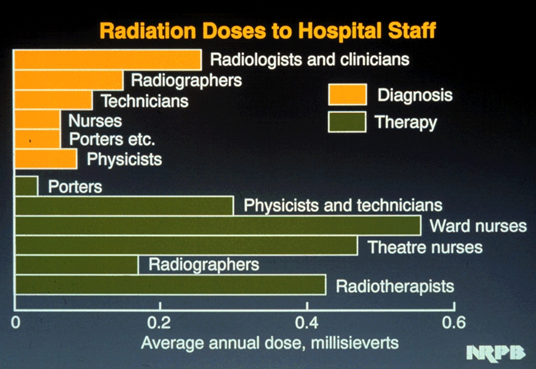Concepts of Risk
Data on occupational exposure
- Occupational Exposure Data 1
- Occupational Exposure Data 2
The NRPB reported in 1991 that there were approximately 283,000 workers occupationally exposed to ionising radiation, including exposure to natural sources.
It was also reported that 156,000 workers were exposed to artificial radiation as part of their jobs, including medical radiation workers. The following table gives the average individual doses received for several different occupations:
| Occupation: | Ave Annual Effective Dose : |
|---|---|
| Air Crew | 2mSv |
| Nuclear Industry Worker | 1mSv |
| Industrial Radiographer | 0.5mSv |
| Medical Radiation Worker | 0.1mSv |


Source: NRPB is now the Radiation Protection Division of the HPA
Move your mouse over the image to see a larger version.
Doses to staff within hospitals vary significantly depending on their activity. The data in the table above is a snapshot in 1991 but practices have changed since then.
Conversely a positron may be created when the nucleus has too many protons to be stable and it is the changing of a proton into a neutron with the subsequent release of a positron particle that accounts for the genesis positrons.
Click on an option.